Harley-Davidson’s Creative Director On Designing His Dream Bike
Featuring H-D’s legendary Panhead V-twin, the one-off “Lucki-Pan” channels classic drag bikes and choppers.
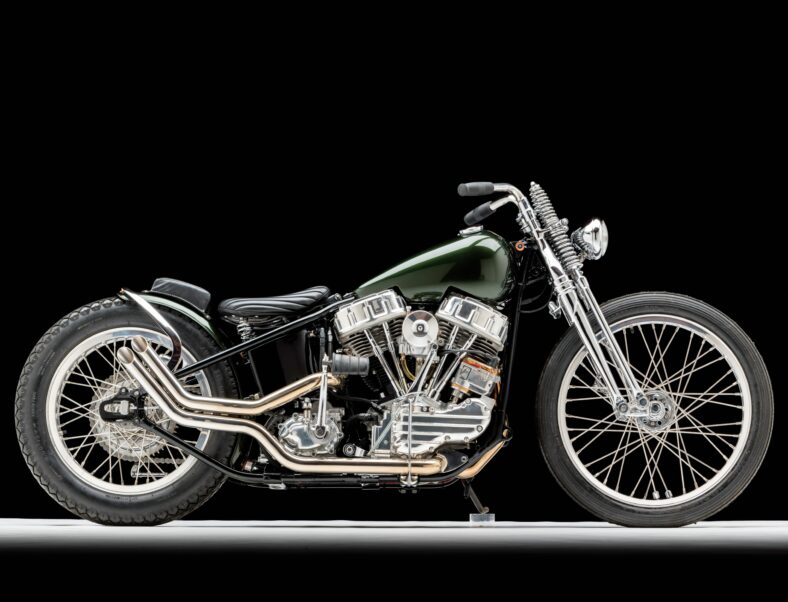
“It’s priceless to me.” A conclusive sentiment that anyone who has spent time and cash on motorcycle mods will understand—the monetary value of a custom bike seldom reflects its subjective worth to an owner. However, the source of that particular quote was telling Maxim about his 1962 Harley-Davidson “Lucki-Pan.” And unlike the tastelessly chromed- and raked-out choppers polluting the pages of Facebook Marketplace, this minimalist one-off is actually objectively beautiful—and therefore valuable.
No surprise, as the Lucki-Pan was built by and for Brad Richards, creative director and vice president of design at Harley-Davidson. The H-D literate will immediately connect the latter half of its name to the “Panhead” engine, a historic V-twin named for the cake pan–like rocker covers topping its cylinder heads. “The Panhead motor is simple to look at and understand,” Richards tells us. “It has the perfect balance of polished and raw surfaces. Its proportions look confident and powerful—and it is.”
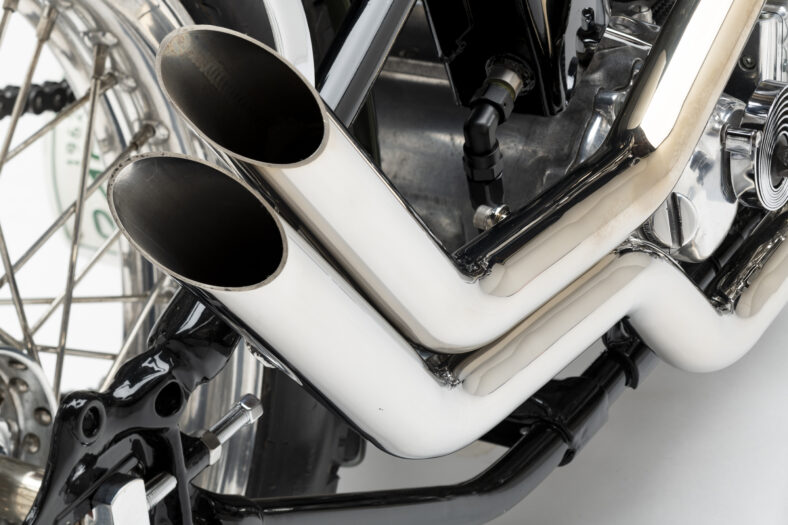
As for the “Lucki” prefix, Richards explains, “Post-WWII green bikes were avoided due to their perceived connection to the military motorcycles, and riders of the time thought a green bike was ‘unlucky.’ I thought this could be a great moment to use the color,” which ultimately came from Nissan’s 1986 palette.
This 1,200-cc power plant was the first piece of the Lucki-Pan’s puzzle, which was actually acquired in Detroit by Richards while on lunch break at his previous gig as chief designer at Ford Motor Company. It was sent to Terry Godschalk of Clarkston, Michigan’s T.G. Speed Equipment for a rebuild, and Richards began working closely with fabricator Ry Seidler, the owner of RAS Moto Detroit, to bring the rest of his design to fruition over a seven-year period.
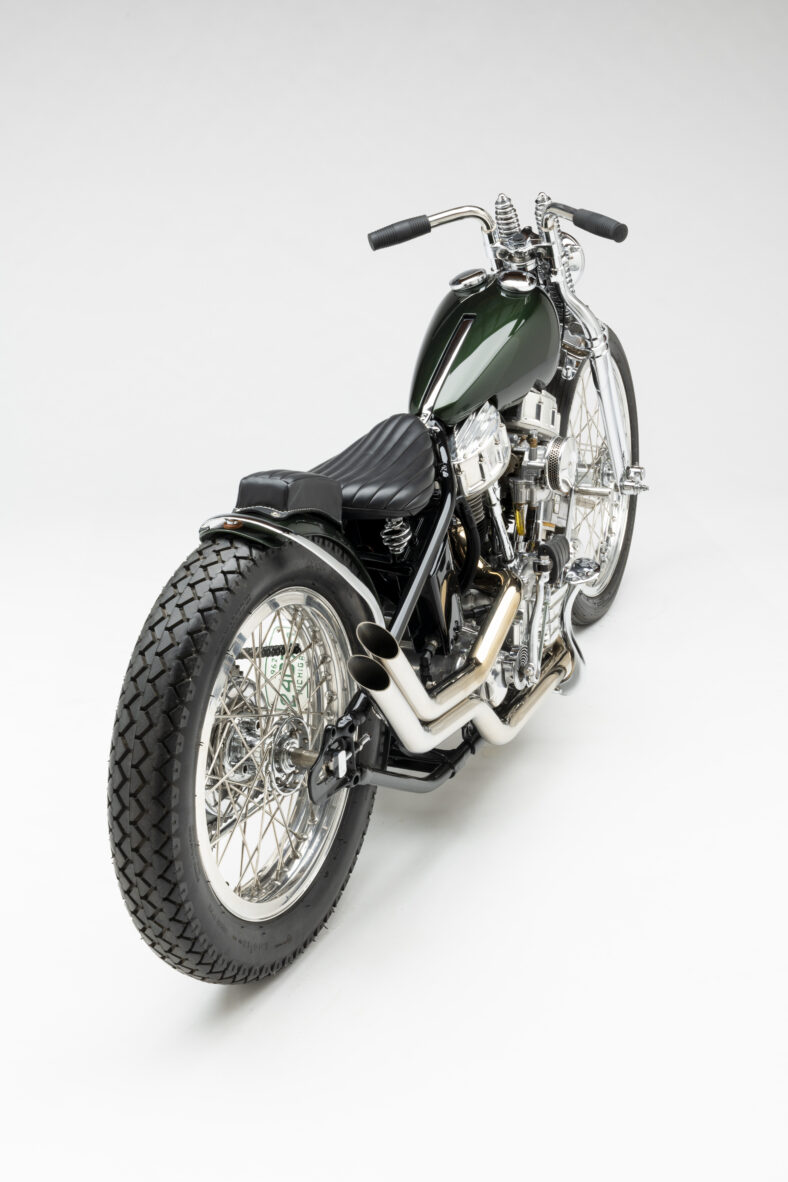
“There’s a design language within choppers. I was playing with this language and rearranging the poetry to suit my vision,” Richards says. “I was basically mixing a classic ’60s chopper with a ’60s drag bike. Most of the key parts—like the engine, frame and wheels—all existed, so it was the smaller details I needed to bring to life.” A revered designer always, Richards went on to explain the first-second-third-read design concept, which deals with the way details become increasingly perceptible as the physical distance between the viewer and subject decreases.
“This is a concept we use inside the Harley-Davidson Design studio while creating our modern motorcycles as well, Richards says. “The first read is the furthest physically away from the bike—100 to 200 feet away—it’s the silhouette, color, proportion of major parts like the wheels, fuel tank, and tail section. If you can create something interesting with the first read, it draws the viewer in closer for the second read, which is from 20 feet away or so, where you begin to see certain key details much closer. You may be drawn into mechanical details of the motor or the design of the seat and handlebars. The color and graphics are also easier to read at this distance, so they begin to do their work and bring you in even closer to the machine.”
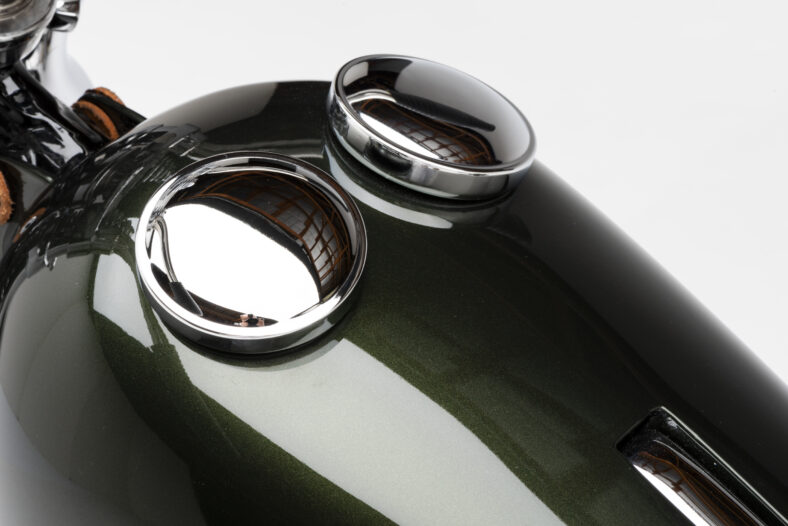
The final level is perhaps the most important in Richards’ opinion. “The third read is where the execution of the bike is judged. For instance, how dynamic is the paint? Is there some interesting element within it like mica, or does the color shift from warm to cool depending on the shapes and contours of the bodywork? How are the many mechanical cables and electrical wires handled? Can you even see them? We call that ‘cable hygiene.’ But the most important element within the third read is the “easter eggs”—the subtle little details that a rider may not even notice until the bike gets its first wash, and a beautiful piece of branding is noticed. It’s the jewelry. The whole point of the three reads is to create desirability with each step closer to the machine. Hopefully the whole bike hangs together with each read, creating a complete and engaging story.”
The Lucki-Pan definitely tells an intriguing tale of motorcycle craftsmanship peppered with Frankenstein-style procedure. The mid-1950s H-D “Straight Leg” frame, named for the frame’s straight front downtubes, came from New Jersey, while the 18- and 21-inch Akront rims could be considered readily available by comparison. But the “little details” that make the Lucki-Pan a paragon of artful customization are how the parts that Richards and Seidler made from scratch cohere. As a Cycle Source article notes, they cut down a Honda fender to match the rear tire. The oil tank, purchased for $14, was restored from a nearly destroyed state by Seidel. The handlebars, handlebar risers, hand-operated “jockey shifter” and foot-operated clutch were all conceived by Richards and crafted by Seidler.
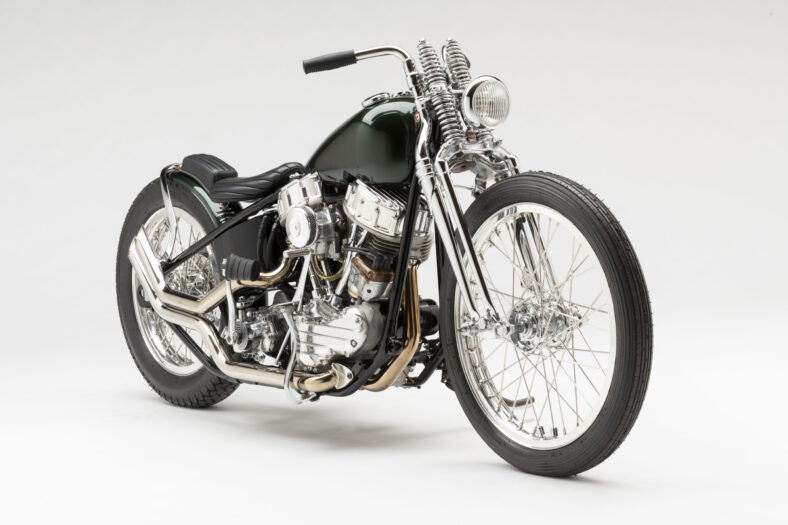
“Building and riding a bike like mine provides a deeply emotional experience that removes you from the day-to-day and delivers you directly into the moment,” Richards says. “It will make you feel alive like nothing else. I’d highly recommend trying it.” You won’t find that feeling on Facebook Marketplace.
This article originally appeared in the January/February 2025 issue of Maxim.
